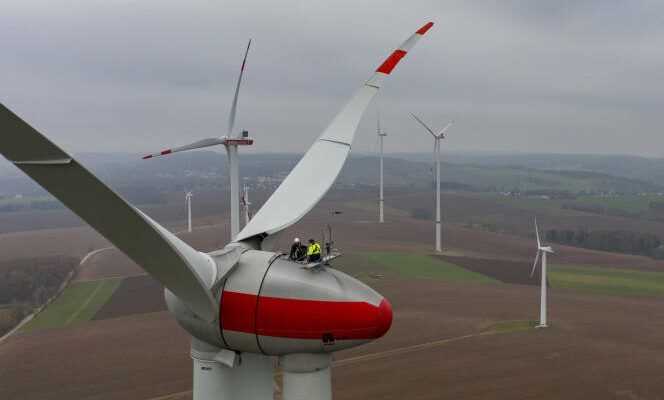It was one of the most anticipated questions of the roadmap of the next government presented in Berlin on Wednesday November 24: how would Germany accelerate its laborious transition to zero carbon? Would the three coalition parties – the Social Democrats (SPD), the Greens and the Liberals (FDP) – manage to agree on a subject where the oppositions in principle were a priori very strong?
Reading the document shows: the future government has succeeded, in two months, in making major compromises to make climate protection one of its priorities, without giving up nor the market economy dear to the Liberal Party. nor to the protection of workers defended by the SPD. The coalition agreement can, in this sense, be qualified as historic.
One of the most important emblems of this high-risk alliance is the announcement of the early exit of coal by 2030, against 2038 expected so far. Coal-fired and lignite-fired power stations, which still cover 25% of electricity needs, are among the biggest emitters of greenhouse gases and polluting particles in Europe.
This objective, presented in the press until Tuesday evening as a victory for the Greens, however appears weakened in the coalition contract by the expression “ideally”. In other words, if the conditions allow it. Still, the project is extremely ambitious: getting rid of coal within eight years, while the country at the same time abandons nuclear power (12% of the energy mix) and needs will increase sharply, represents a challenge for the security of network supply and stability.
Resistance from residents and administrative obstacles
This “collective mission”, as specified in the coalition contract, must succeed thanks to a historic effort to accelerate the development of renewable energies. The future government estimates the need for electricity in 2030 at 680-750 terawatt-hours, which corresponds to an increase of 35% to 50% compared to the production of 2020. Ultimately, 80% of this electricity will have to come from renewables at this time. date, compared to 47% today. The rest of the electricity will come mainly from “modern” gas-fired power stations, which will have to be built in such a way that they can be converted to climate-neutral gases. Natural gas, the text indicates, “Is essential for the transition period”.
Is this acceleration of renewables achievable, when, in recent years, the construction of wind turbines and high voltage lines has often encountered resistance from local residents and administrative obstacles? The government plans to speed up the planning and authorization procedures for high-voltage installations and lines considerably. More than 1,000 new wind turbines will be erected each year, and 2% of the territory will be reserved for onshore wind power.
You have 36.58% of this article to read. The rest is for subscribers only.
